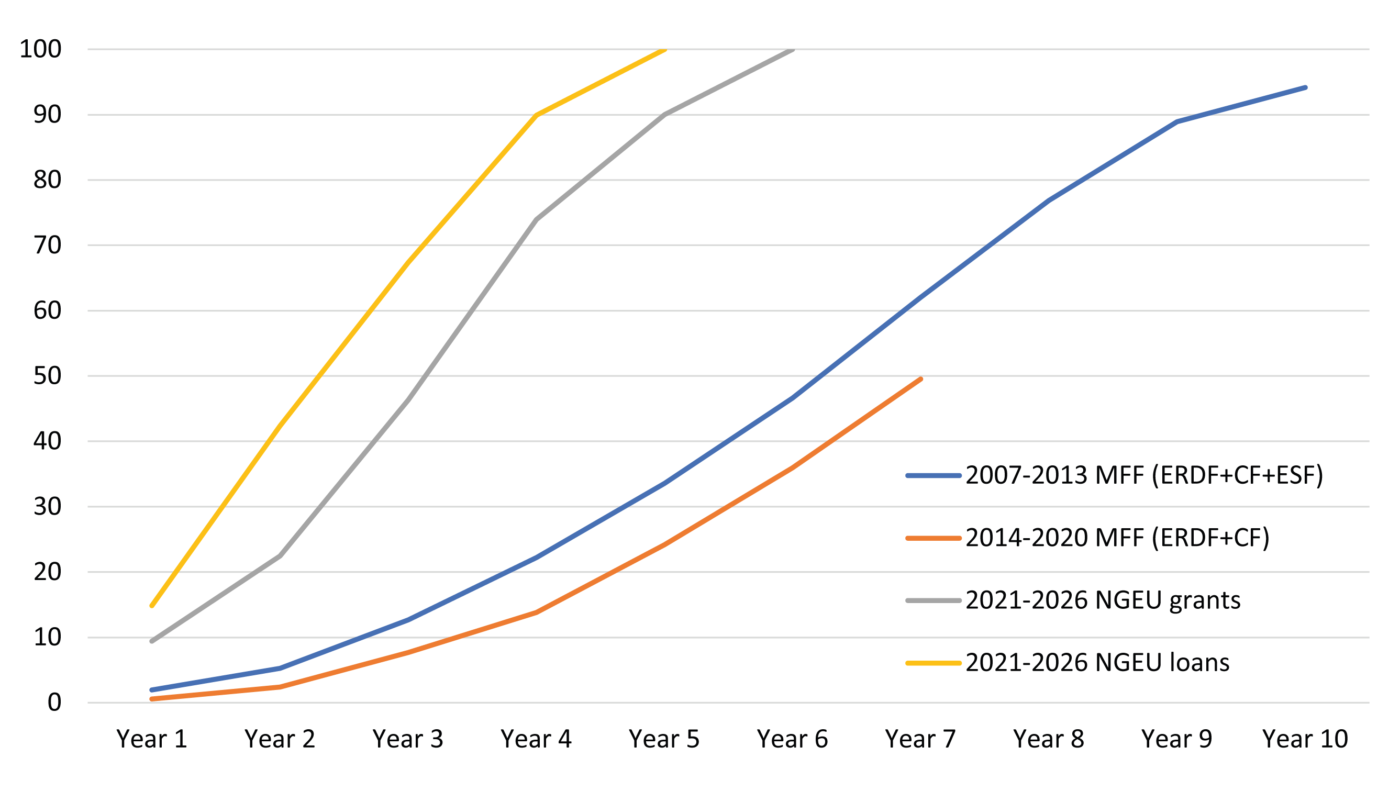The European Union is raising large amounts to pass on to its members. But absorption of EU funds is typically slow and some countries might struggle to spend what they can get, even if they will have broad freedom to design spending programmes.
The focus should be on worthwhile spending, not just on absorbing EU funds.
The European Union’s landmark recovery
instrument, Next Generation EU (NGEU), will be embedded into the EU’s
budget. This makes sense, because the EU budget is a well-established
framework and hence can be deployed readily. But pay-outs from the EU
budget are disbursed slowly to member states, partly because programmes
have to be designed, approved and implemented, and must also pass
various checks to ensure the proper use of EU funds.
EU budgets include two types of numbers:
‘commitment appropriations’, which are ceilings on spending promises,
and ‘payment appropriations’, which are ceilings on possible payments.
Actual payments from the EU budget are typically less than payment
appropriations, because not all beneficiaries are able to use the
available funds. EU funding is considered to have been absorbed when
money is paid out by the Commission to an EU country. Such payments
include advances, interim and final payments.
Of the recovery money, the European Commission expects only a quarter to be paid out in 2021-2022,
while three-quarters will be paid out in 2023 and after. Even this
rather slow expected speed of NGEU disbursement would be rapid compared
to the record of absorption of EU Structural Funds (Figure 1). This puts
a question mark over whether the NGEU money can really be paid out as
planned.
Figure 1: Historical EU structural fund pay-out rates and assumed pay-out rates from NGEU (%)

Source: Bruegel[i].
Note: Year 1 is the first year of the respective programme, ie 2007 for
the 2007-2013 MFF, 2014 for the 2014-2020 MFF, and 2021 for NGEU. MFF:
Multiannual Financial Framework; CF: Cohesion Fund; ERDF: European
Regional Development Fund; ESF: European Social Fund. The pay-out rate
(or in other words, the ‘absorption rate’) is the percentage of the
total amount committed in the EU budget to a member state that has been
paid by the Commission to that member state.
Italy and Spain, the two largest expected
beneficiaries of the NGEU in terms of euro amounts, are among the worst
performers in terms of absorption of EU funds. For the 2014-2020 period,
Spain had absorbed only 39% of the money it was due from European Structural Investment Funds (ESIFs) by 23 September 2020 – the EU’s worst rate – while Italy at 40% is also among the slowest.
Croatia was similarly a poor performer with a 2014-2020 ESIF
absorption rate of just 39% (by 23 September 2020), yet Croatia is
expected to receive grants from NGEU equivalent to more than 10% of its
GDP, with potentially another 6.8% as loans.
For the new EU Multiannual Financial Framework (MFF) period starting in January 2021, countries will have to absorb:
(a) The remaining portions of the 2014-2020 MFF funds, which are rather large for many countries;
(b) The ‘standard’ seven-year 2020-2027 MFF funds; and
(c) The funds available under NGEU.
© Bruegel
Key

Hover over the blue highlighted
text to view the acronym meaning

Hover
over these icons for more information

Comments:
No Comments for this Article